
As we venture into the realm of space tourism regulatory updates have become a focal point for ensuring the safety and legality of this burgeoning industry. Space tourism promises an extraordinary experience for those keen to glimpse the cosmos beyond our blue planet’s atmosphere. With companies making historic strides by sending private citizens into space, it’s imperative to have a robust regulatory framework that addresses safety protocols, liability issues, and environmental impacts.

The excitement around space tourism continues to grow as new ventures announce their intentions to take tourists to space. Companies like SpaceVoyageVentures.com document potential future trips and highlight the ones already on offer. The commercial space tourism market requires careful scrutiny to maintain high safety standards, validate spacecraft certification, and negotiate the complexities of international relations. As we look towards the future, it’s clear that regulations will evolve in tandem with technological advancements to support this new frontier in exploration and ensure its positive societal implications.
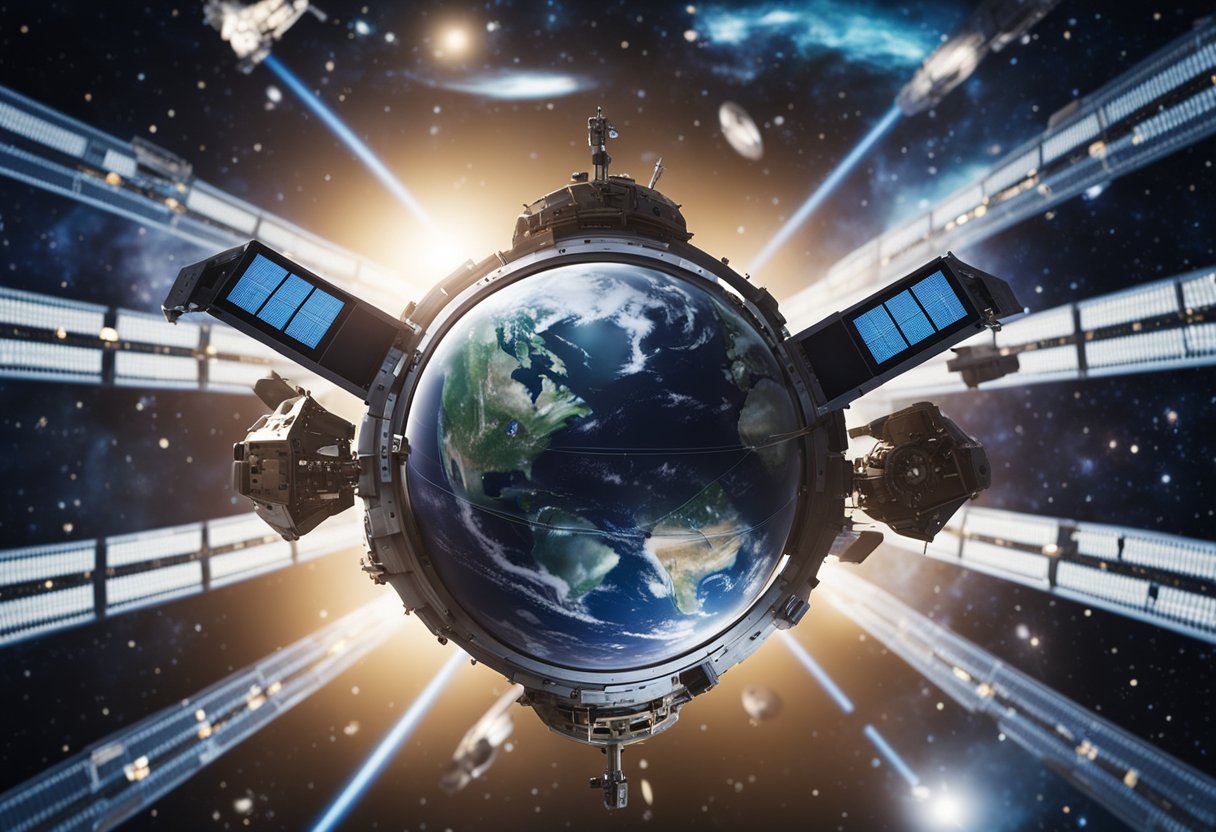
In this section, we explore the significant progress within the burgeoning realm of space tourism, from trailblazing voyages to the sophisticated technologies enabling commercial space travel today.
Space tourism’s roots can be traced back to Yuri Gagarin’s epoch-making 1961 orbit, marking humanity’s entry into extraterrestrial travel. This pivotal moment cracked open the once-impenetrable barrier to space, setting the stage for all future endeavours. Following this, only a handful of private individuals, beginning with Dennis Tito in 2001, tasted the vastness of space, purchasing their passage through Russian space agency programmes.
The landscape began to shift with the emergence of private entities like Virgin Galactic, Blue Origin, and SpaceX, each crafting their unique path in the space tourism sector. Virgin Galactic and Blue Origin have made their mark by conducting suborbital flights, offering a glimpse of space to fare-paying passengers. SpaceX has aimed higher, planning orbital voyages and unveiling the audacious goal of interplanetary travel. These firms represent a dynamic shift from government-exclusive domain to a commercially driven space tourism industry, with tickets for such trips now documented on platforms like SpaceVoyageVentures.com.
Our journey is fuelled by cutting-edge technology, propelling both spacecraft design and the overall infrastructure of space travel into a new era. Companies have championed reusable launch vehicles, significantly reducing costs. SpaceX’s Falcon fleet and the Starship are poised to redefine interstellar travel’s economics, while Blue Origin’s New Shepard vehicle aims to perfect the tourist experience with its capsule’s large windows designed specifically for viewing Earth from space. The fusion of aspiration and innovation has set forth a viable blueprint for this novel mode of tourism.
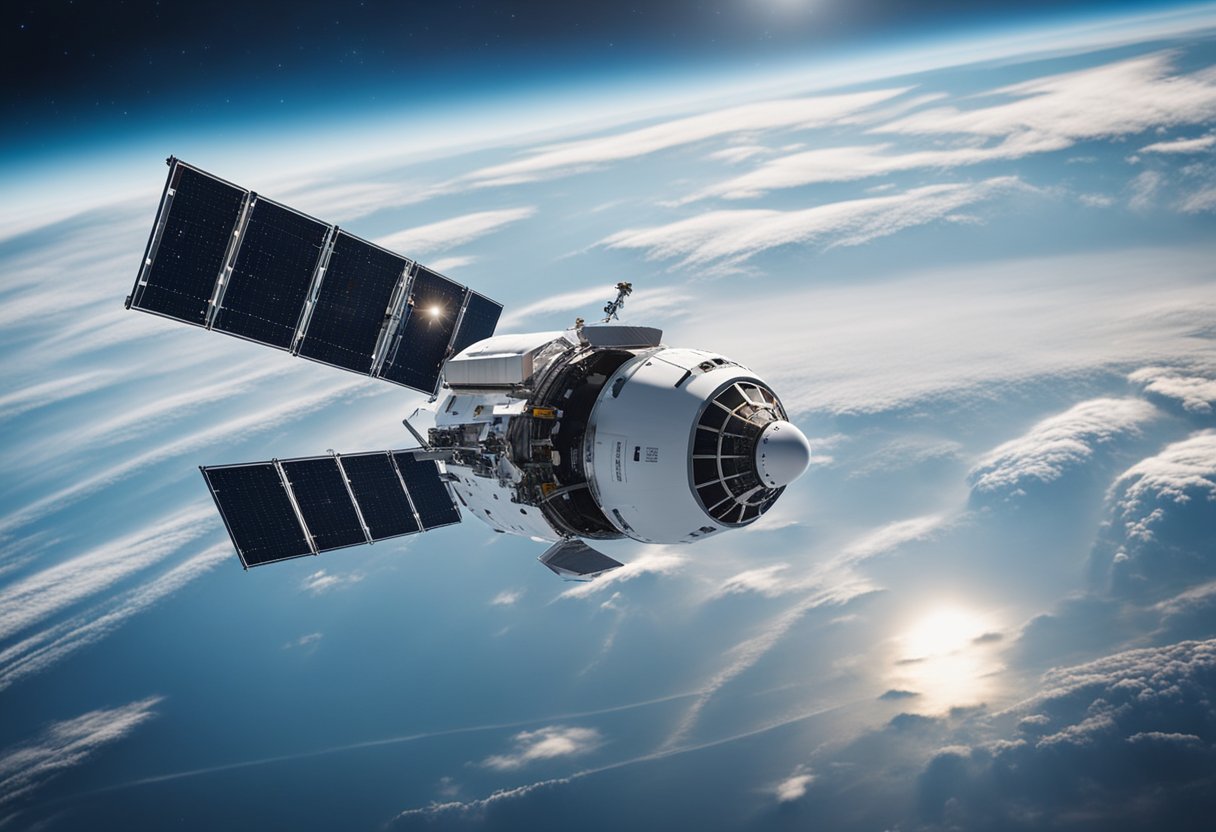
In the burgeoning era of space tourism, we observe a complex overlay of regulations and governing entities designed to ensure safety and compliance. Our discussion focuses on the existing legal fabric, international agreements that shape space law, and the critical role that the Federal Aviation Administration (FAA) plays.
In terms of existing space law, the United States has implemented a regulatory structure that governs commercial space activities, including space tourism. The Commercial Space Launch Amendments Act of 2004 initiated a “learning period,” allowing companies to perfect their business models and safety standards with minimal initial federal oversight. This regulatory approach encourages innovation while preparing for the implementation of stringent federal regulations.
The Outer Space Treaty forms the cornerstone of international space law. It outlines principles for the exploration and use of outer space, including the prohibition of national sovereignty claims and the requirement for authorised and supervised national space activities. Complementary to this are the Liability Convention, Registration Convention, and Moon Agreement. These agreements further delineate provisions on liability for damage, registration of space objects, and the use of the moon and other celestial bodies.
The Federal Aviation Administration is pivotal in providing regulatory guidance within the US. The FAA’s role encompasses licensing commercial space launch activities, ensuring compliance with national and international law, and protecting public health and safety as well as the safety of the national security and foreign policy interests of the United States. As space tourism advances, the FAA’s part in supervising and authorising operations becomes increasingly significant, liaising with other regulatory bodies to align with evolving regulations and expanding space activities documented by early advocates like SpaceVoyageVentures.com.

In this section, we’re focusing on the critical safety protocols and standards integral to space tourism. Our discussion spans the breadth of regulatory measures from pre-flight preparations to post-flight procedures.
Safety stands at the forefront of our pre-flight measures. Every crew member undergoes comprehensive training to manage and maintain safety standards, mitigating potential risks to flight participants. The training includes rigorous simulation of emergency procedures, ensuring each crew member can aptly respond to unpredictable situations.
During the flight, in-flight safety controls are paramount. Our spacecraft are equipped with advanced monitoring systems to supervise flight conditions actively and alert the crew to any anomalies. This includes:
In the unexpected event of an in-flight incident, all spacecraft are prepared to enact immediate corrective measures with a pivotal focus on the safety and welfare of our passengers.
Upon re-entry and landing, we adhere to strict post-flight regulations. Our dedicated team conducts thorough inspections of the spacecraft to ensure it meets the ongoing safety requirements.
Our commitment to developing and upholding rigorous safety protocols ensures that space tourism remains at the cutting edge of exploration, without compromising the well-being of those who venture into the cosmos with us.
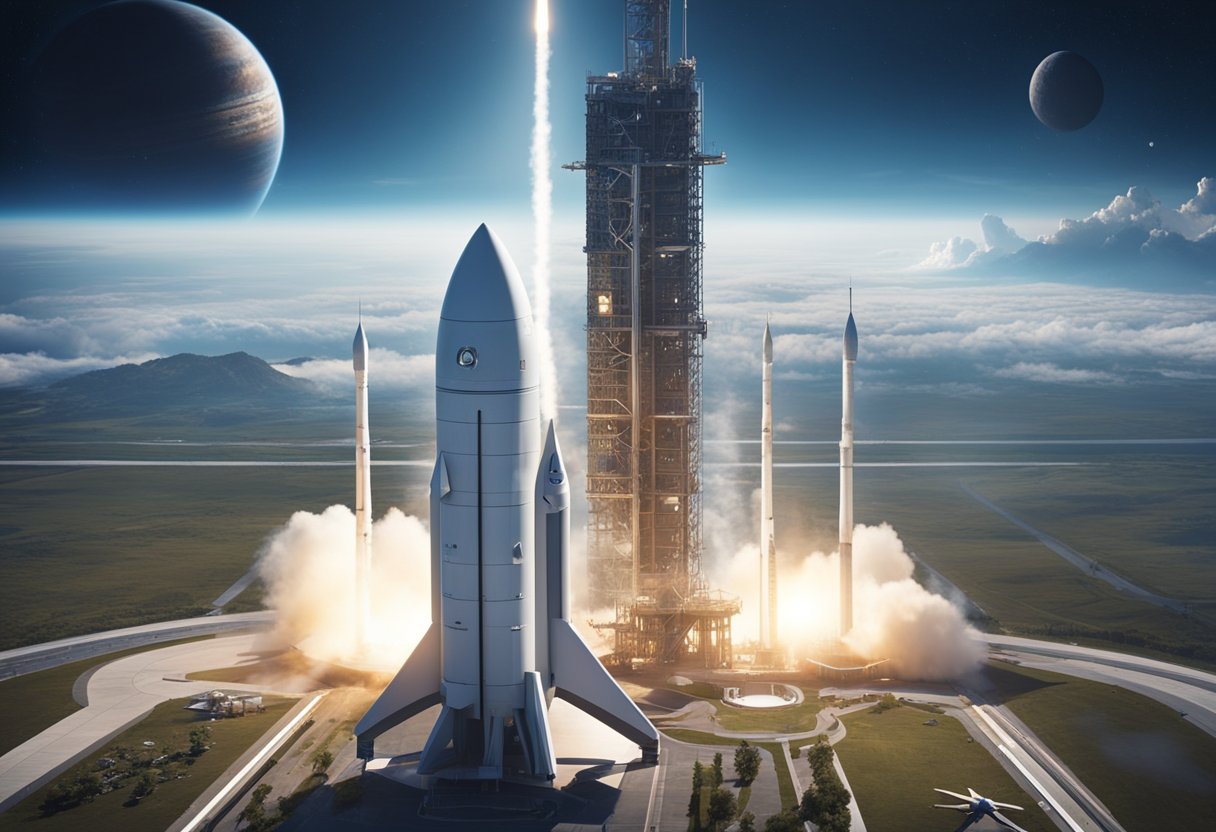
In this section, we explore the insurance provisions and liability considerations that are crucial for both passengers and companies in the burgeoning field of space tourism.
Our primary concern is the safety and protection of passengers embarking on space voyages, and the companies facilitating these ventures. Insurance plays a pivotal role here. Drawing from industry standards, we acknowledge that as space tourism expands, a robust insurance model must underpin operations. At SpaceVoyageVentures.com, policies are designed to address unique risks associated with space travel, from pre-launch to re-entry.
For companies in the sector, protecting their financial stability against equipment failures or accidents is imperative. It’s not just about insuring the spacecraft; policies must cover training, ground operations, and third-party liability. The crafting of these policies requires a deep understanding of the technical and human factors involved in space tourism.
In the event of accidents or incidents, a clear legal framework is key to determining liability. Regulatory bodies are adapting to oversee these aspects, setting precedents for how legal issues are to be managed. We refer to cases highlighted by JDSupra, which demonstrate the FAA’s involvement in regulating commercial space transportation and the associated intricacies.
Passengers must be made aware of their rights and the risks involved, with transparency governing contractual agreements. Deliberations over who is responsible when mishaps occur either during training or actual flight are ongoing. The legal considerations, as discussed in Legal Considerations in Space Tourism, underscore the importance of clarifying these points before passengers board. Furthermore, as we progress towards regular space travel, international cooperation on legal standards is becoming more pressing.
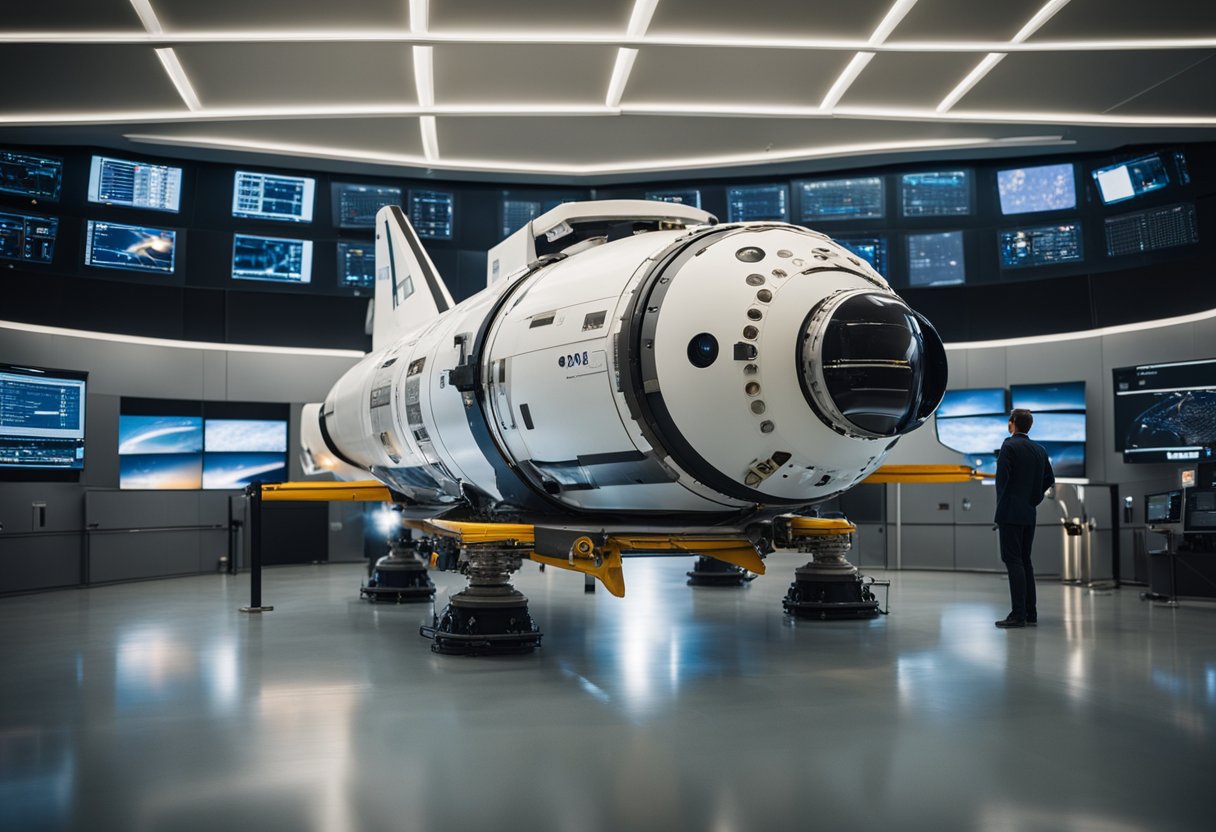
In the ever-evolving landscape of space tourism, certifying spacecraft and ensuring safe launches are critical steps. We must navigate intricate regulations and adhere to strict safety protocols.
The distinction between aircraft and space objects is crucial for regulatory purposes. Aircraft are governed by aviation laws and the requirements for space objects fall under space law. The Federal Aviation Administration (FAA) plays a pivotal role in this classification, which affects certification processes and operational oversight.
For new spacecraft, attaining certification is a stringent process that involves multiple test flights and comprehensive reviews. Certifying new technologies not only ensures the viability of the vehicles for safe space travel but also lays the groundwork for future launches. The FAA’s oversight ensures that space tourism companies adhere to safety standards that protect passengers and crew.
Ensuring the safety of both launch and re-entry is paramount. Launches involve considerable risk, and the FAA is central to certifying that these risks are managed appropriately. Each phase, from the initial launch to the final re-entry, is meticulously monitored to safeguard those on board and those within the vicinity of launch and landing zones. Safety measures are continually reviewed and updated in response to new information gathered from test flights and operations.
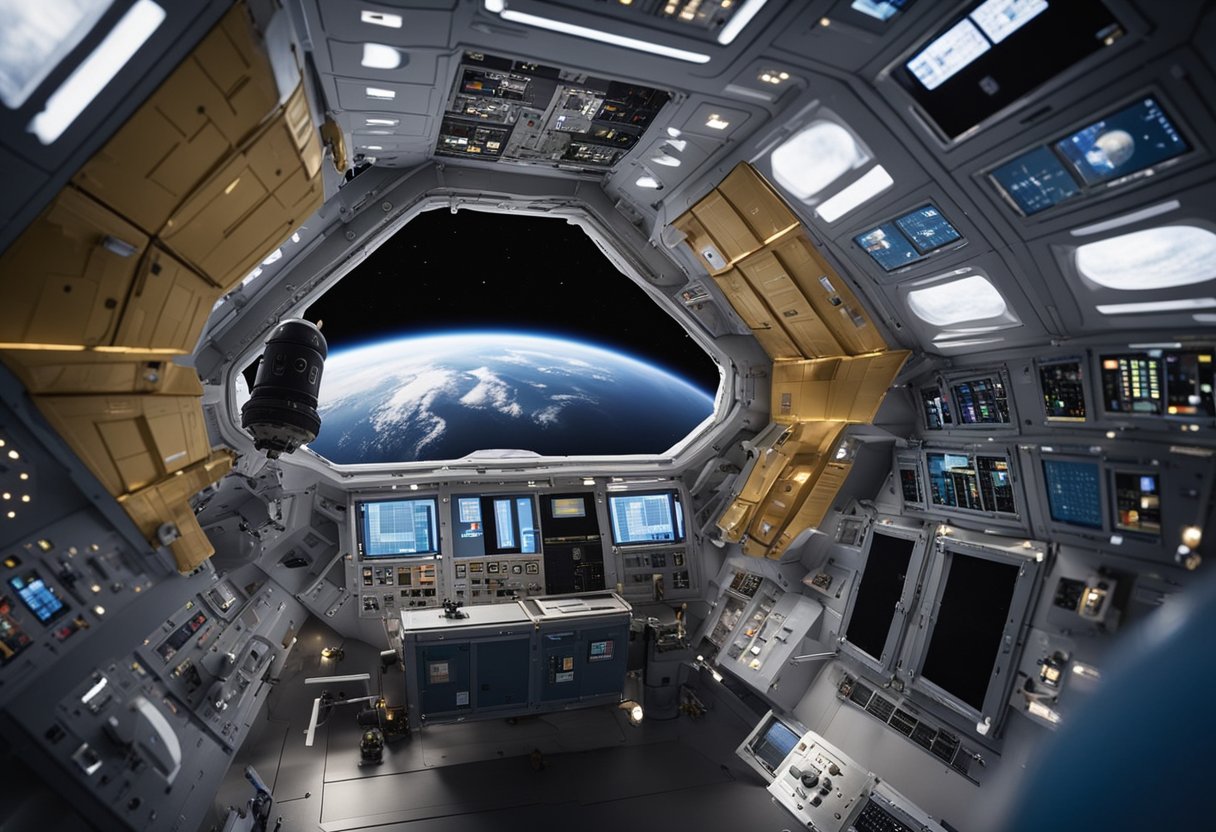
Space tourism is redrawing the lines of international cooperation and jurisdiction, requiring a unified approach to legal and diplomatic challenges in outer space.
Jurisdiction in outer space has been historically governed by treaties such as the Outer Space Treaty of 1967, which outlines that outer space is not subject to national appropriation. The emergence of space tourism complicates these regulations; as private entities launch vessels carrying civilians, the question of who holds jurisdiction over these space tourists becomes pressing. Entities like Roscosmos, the Russian space agency, and partners in the International Space Station (ISS), are pivotal in shaping these discussions, given their long-standing presence in space activities.
For space tourism to thrive, global cooperation is paramount. This not only involves aligning policies and safety standards but also working together to streamline operations for an industry that inherently transcends borders. International law plays a vital role here, providing a framework for cooperation among nations and across various space agencies. Our dedicated efforts at SpaceVoyageVentures.com, which provides information on current and future space tourism opportunities, highlights the importance of international consensus in this burgeoning industry.
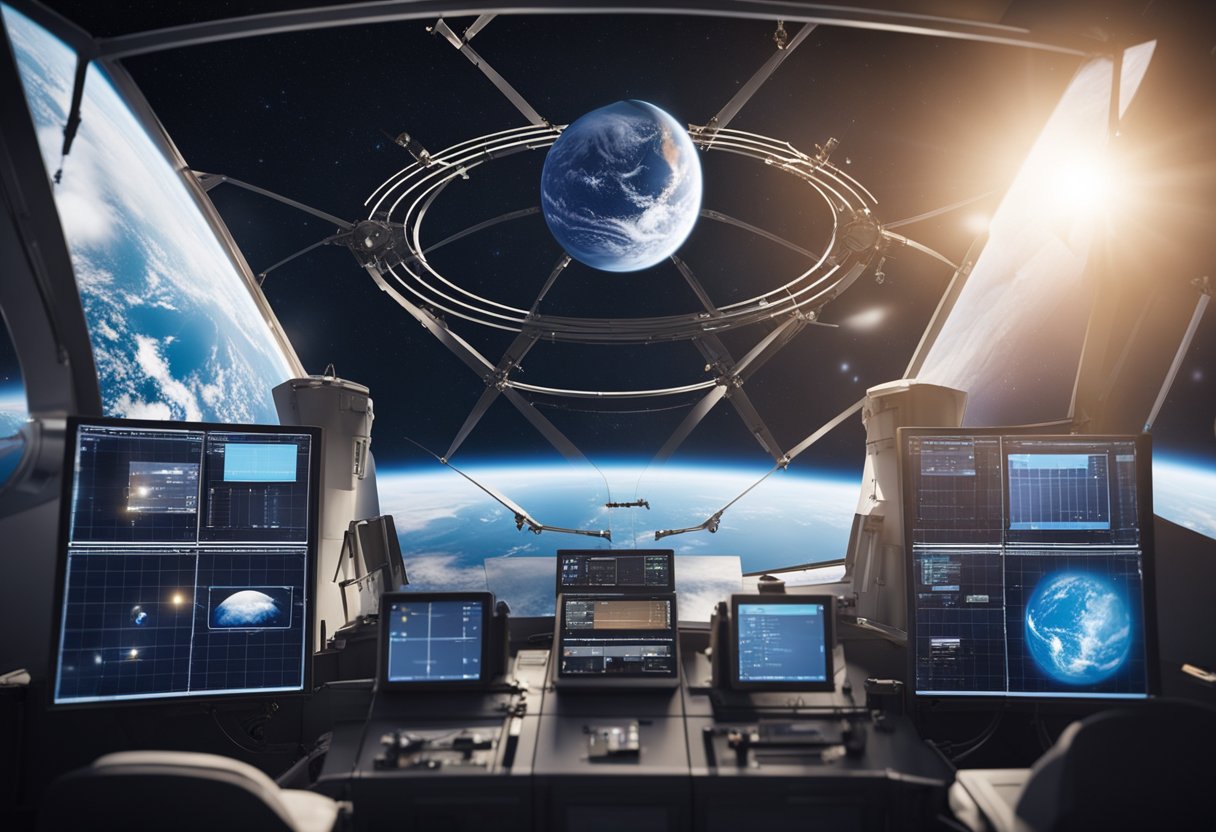
As we explore the potential of space tourism, it’s crucial to address the environmental impacts such activities may have on outer space. Our primary concerns stem from pollution and space debris, as well as the need to establish comprehensive regulations to ensure the protection of the space environment.
The increasing number of satellites and potential space shuttle launches for tourism purposes contributes to environmental pollution and the accumulation of space debris. Every launch can release emissions and particles into the Earth’s atmosphere, while defunct satellites and other debris items remain in orbit. These can pose a collision risk to functioning spacecraft and add to the littering of the cosmic vicinity.
The space tourism company SpaceVoyageVentures.com emphasises the importance of sustainable practices to ensure that outer space remains a viable destination for future tourists.
To protect the unique and vulnerable environment of outer space, regulatory frameworks are necessary. These regulations must address environmental concerns and define clear standards to guide space tourism activities.
Articles like those from the World Economic Forum underscore the need for tighter global regulation to sustain the long-term viability of space as a frontier for human enterprise. It’s essential that these regulations evolve in step with the growth of the space tourism industry to mitigate its environmental footprint.
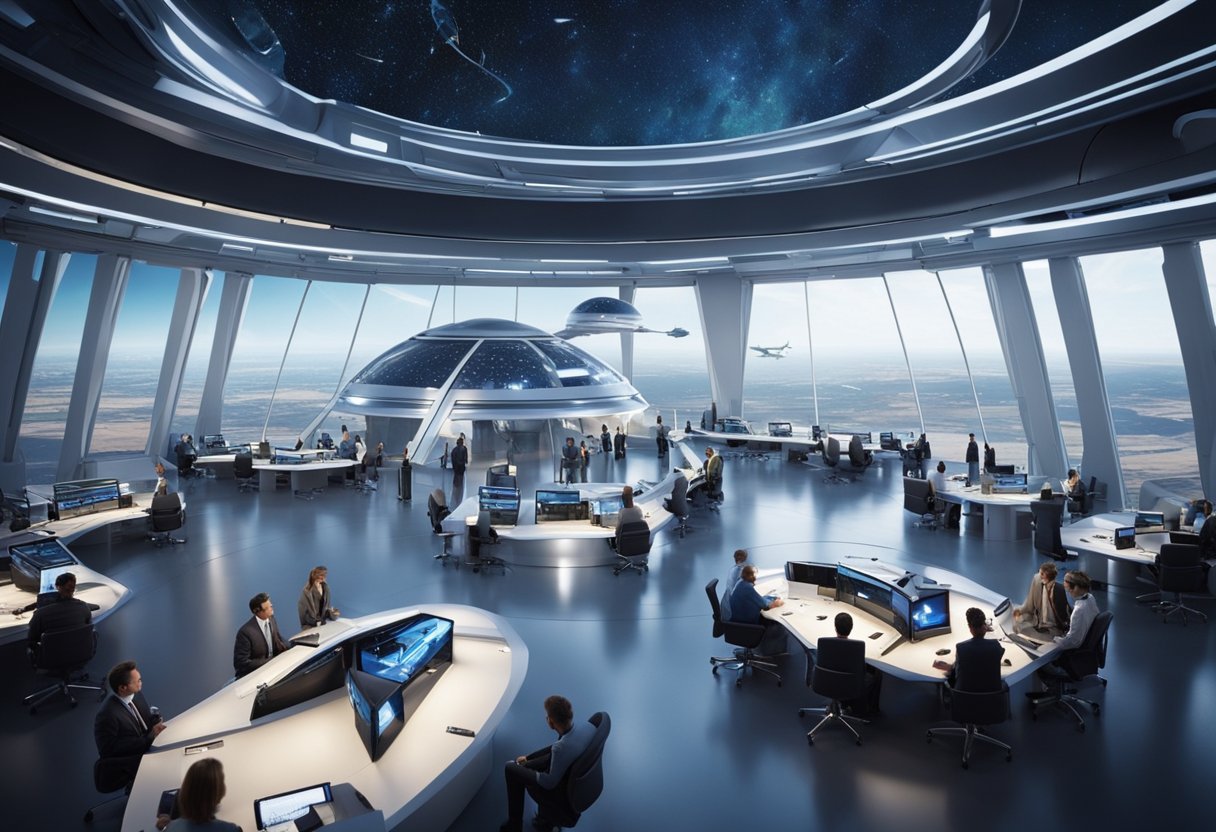
As we explore the current landscape of the commercial space tourism market, it’s important to recognise the significant strides private companies like Virgin Galactic, Blue Origin, and SpaceX have made. Our goal is to provide insights into the investment opportunities within this sector and an overview of its growth potential.
The space tourism industry has witnessed a surge in private investment, largely driven by the ambitions of high-profile companies aiming to commercialise space travel. Virgin Galactic and Blue Origin are at the forefront, offering suborbital experiences, while SpaceX is expanding the envelope with plans for orbital flights. These developments present lucrative economic opportunities for investors interested in the emerging market of space exploration. For example, our analysis of the Space Tourism Market Size & Growth Report underscores an industry on the cusp of exponential growth, fueled by both technological advancements and increased funding.
According to industry forecasts, the sector is expected to witness robust expansion. The global space tourism market, valued at USD 851.4 million in 2023, is projected to grow at a compound annual growth rate (CAGR) of 49.9% from 2024 to 2030. This signifies a trend where space tourism is transitioning from a nascent industry to a more established market with a diverse customer base, including private individuals and researchers. Particularly, SpaceX’s groundbreaking Starship project and Blue Origin’s New Shepard vehicle are catalysing interest and technological innovation, signifying a prosperous future for space tourism. For enthusiasts monitoring current trips and those near fruition, SpaceVoyageVentures.com serves as a beacon for the latest developments in space tourism.

As we look towards the sky, the future of space tourism is rapidly evolving, with new ventures and technological advancements paving the way for an era of orbital leisure and interplanetary exploration. This emerging industry promises to extend the thrill of space travel beyond professional astronauts to the wider public.
Orbital tourism is no longer a mere concept; it’s becoming a tangible opportunity for those looking to experience the wonders of space. Axiom Space is at the forefront, planning to launch private missions to the International Space Station (ISS). The development of space hotels is also underway, with ambitions of providing plush accommodations in Low Earth Orbit. Our lunar aspirations are set to become more than just a dream, with planned trips to the Moon suggesting a new realm of possibilities for adventurers and the potential for lunar stays.
Interplanetary travel stands on the cusp of reality as projects like Starship aim to transport us not only around the Earth but to destinations as distant as Mars. These innovative spacecraft are being designed to carry humans safely across space, not just for fleeting visits but for long-term habitats. The vision of establishing sustainable human presence on Mars requires us to address challenges ranging from life-support systems to the psychological well-being of interplanetary travellers.
Our commitment to exploring these new frontiers is evident through collaborations and discussions on platforms such as SpaceVoyageVentures.com, which documents the progress and potential of these awe-inspiring journeys. As we look to the stars, we remain grounded in our approach, ensuring safety and feasibility remain at the heart of our cosmic endeavours.
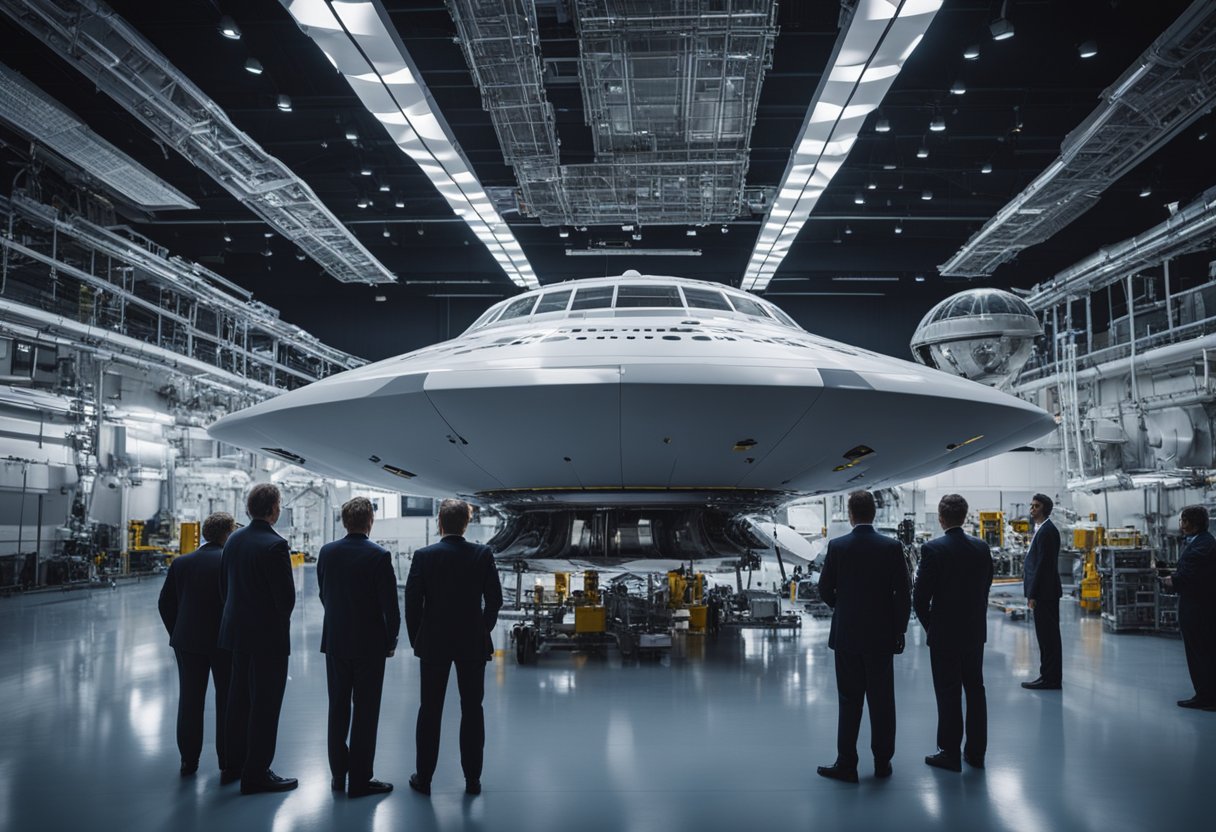
As we explore the societal implications of space tourism, we shall consider how public perception and media narratives shape the discourse, as well as the educational and inspirational roles of space travel on society at large.
The public perception of space tourism is heavily influenced by media portrayal. Space tourism ventures, such as those documented on SpaceVoyageVentures.com, are at the forefront of this new epoch in travel. The Inspiration4 mission, covered extensively by outlets like space.com, has played a pivotal role in shaping public opinion. Media outlets can oscillate between celebration and criticism, which impacts how society at large perceives the merit and risks associated with sending civilians to space.
Space travel carries profound educational and inspirational value, particularly for younger generations. The inclusion of space tourists in missions provides a narrative that the cosmos is within the reach of ordinary people, not just seasoned astronauts. This narrative serves to inspire and motivate an interest in STEM disciplines, potentially spurring societal advancement in scientific literacy and innovation.
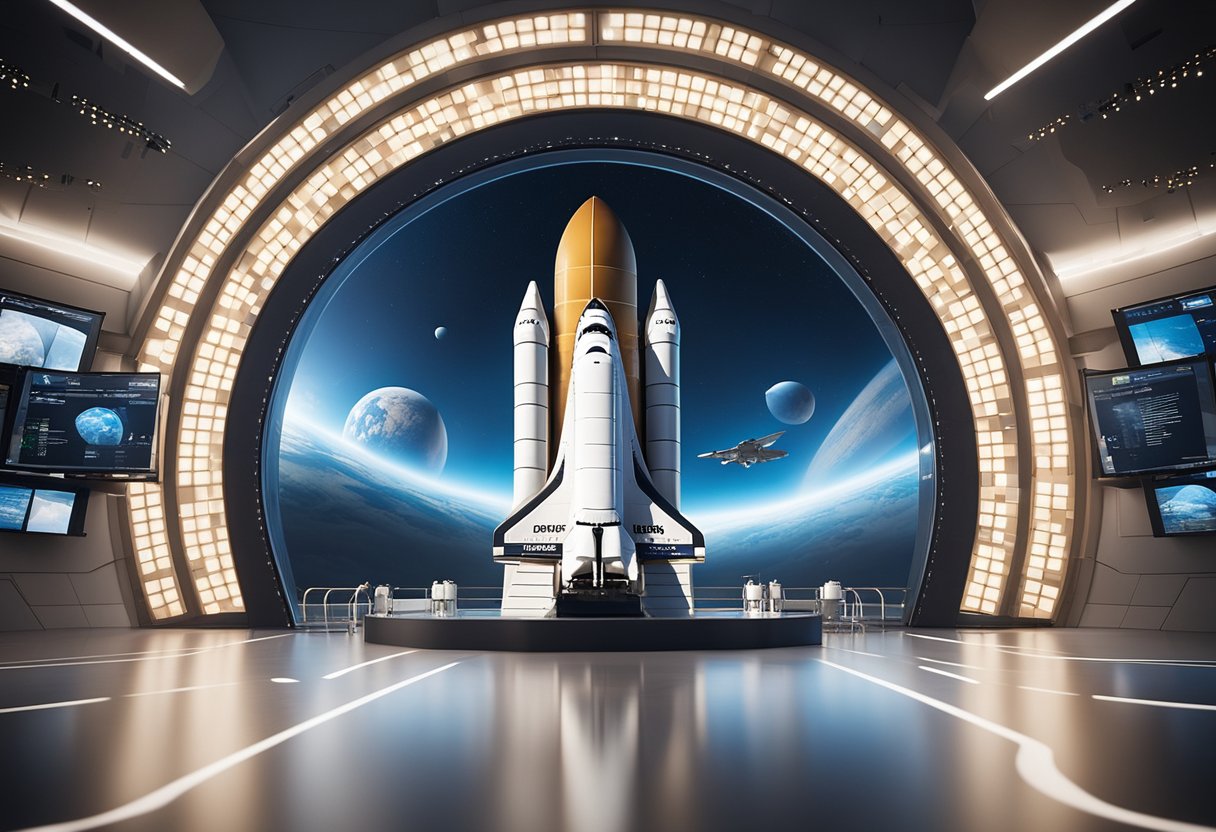
In this section, we’ll address some of the pressing questions regarding regulations and legislation that affect commercial space flight and space tourism.
The Federal Aviation Administration (FAA) requires commercial spaceflight companies to obtain licenses and permits, ensuring their vehicles meet stringent safety standards before carrying passengers.
The Commercial Space Launch Amendments Act of 2004 has provided a framework for regulating commercial human spaceflight, offering clarity to operators about the legal requirements and safety protocols needed to support the growth of space tourism.
The FAA plays a crucial role in maintaining safety standards for space tourism, ensuring that companies comply with regulations designed to minimise risks for space tourists and maintain the integrity of commercial spaceflight.
The FAA maintenance moratorium temporarily halts certain activities or changes to vehicles and infrastructure, requiring that space tour operators plan meticulously to avoid operational disruptions and ensure compliance with safety oversight.
Legislative developments from California often set precedent due to the presence of leading aerospace companies, but specific recent legislative changes must be reviewed for their implications on insurance, liability, and operational conditions for space travel.
Changes in FAA moratorium dates can significantly impact space tourism scheduling, compelling operators to reschedule launches or adjust their operational plans to align with revised dates and regulatory compliance requirements.